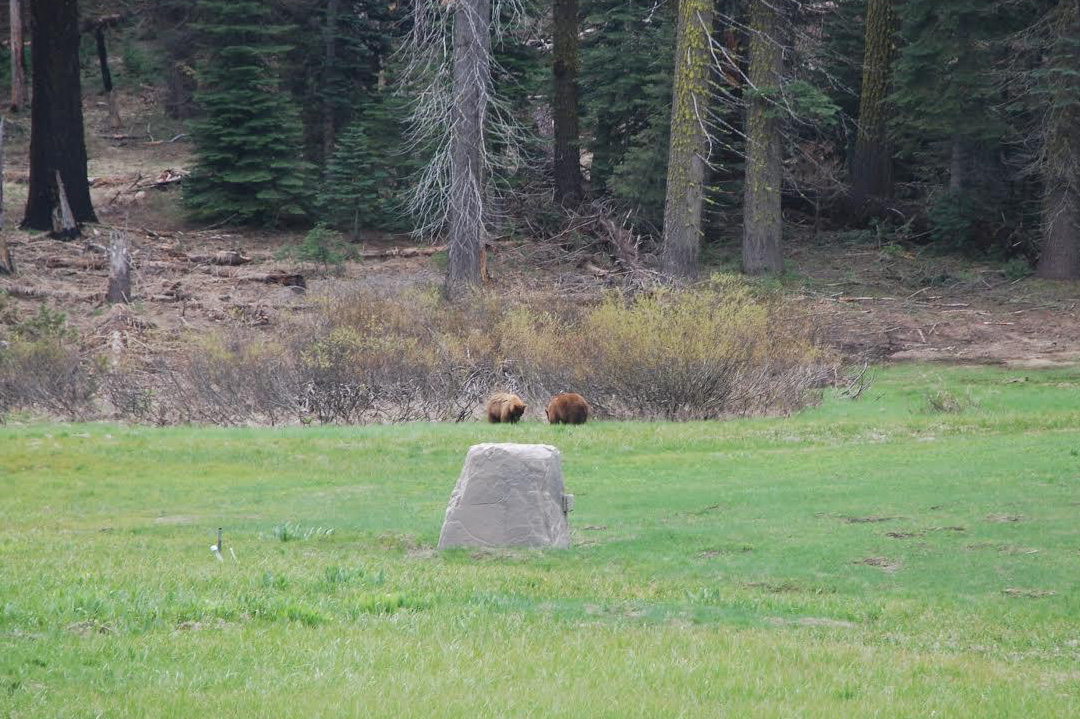
Bears seen right before mating occurred (Photo by Andi Stewart)
Spring is transitioning into summer and mating season in Yosemite has begun! Bears are solitary creatures and aren’t often seen in pairs or sloths (a group of bears is called a sloth). However, there are a few common exceptions: when food is overly abundant in one specific place, when sows have cubs or yearlings, and in the late spring and early summer during mating season (May–July).
Bears generally become reproductively mature between the ages of 3 and 5 years old. Bears are polygamous, so it is common for an individual bear (of either sex) to mate with multiple bears within one mating season. A female bear may give birth to cubs with different fathers in the same litter. Male bears will court females with a variety of behaviors, including barking, biting, hugging, mock fighting, and kissing. This behavior can take between a couple hours up to a couple days.
Even though bears mate and eggs are fertilized in the spring/summer, embryonic growth will not occur until fall. This is because bears use a clever reproductive strategy called delayed implantation. This allows for bears to only have the number of cubs that their bodies are able to support over the winter. if they have a lot of fat stored in the fall, they are likely to have more cubs than if they are thin. On average, a bear will have a litter of two cubs, but a very well fed bear could have three or more! Likewise, a thin bear may only have one cub, or none that year. Cubs are born between January and February weighing less than a pound.
Females mate and have cubs every other year. Their cubs stay with them through their second spring, when it is time for the sow to mate again. This is when the one-year-old bears (yearlings) will go off on their own. These yearlings are often mistaken for cubs who are missing their mother. They are generally between 50 and 80 pounds and are trying to find their place in the landscape. Female yearlings are less likely to disperse than males, often having overlapping home ranges with their mother even into adulthood.
It is very important to always keep a safe distance from all wildlife in Yosemite National Park (a minimum of 50 yards from any bear). Mating bears can exhibit unusual behaviors and males may become more aggressive. Females with cubs can be protective of their young, and yearlings out on their own for the first time have a particularly hard time staying out of trouble with humans. It is crucial that they keep their natural fear of humans, and never learn about human food, so that they can remain wild. This is an exciting time to see bears exhibiting wild behaviors, but please, for your safety and theirs, always protect your food from wildlife and never approach wild animals, even if it means giving up on that perfect photo opportunity.
